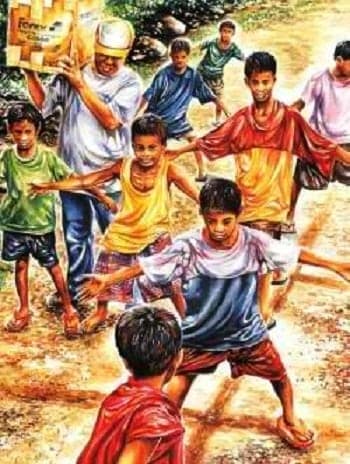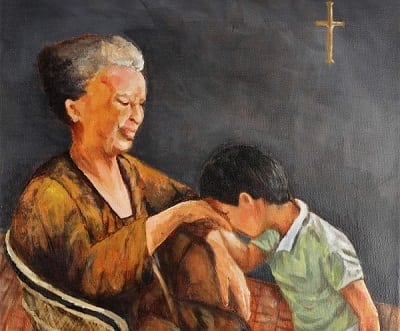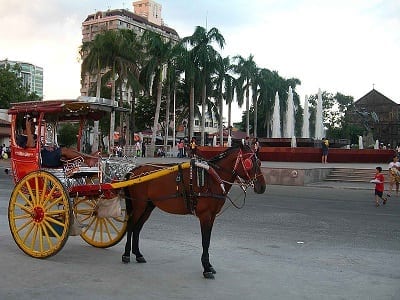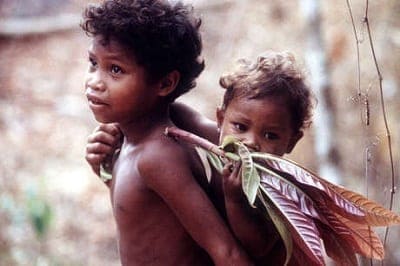9 Philippine Icons and Traditions That May Disappear Soon

The Philippines is a land known for its rich culture and traditions, having been occupied and influenced by a number of nations including Spain, America, and Japan. Likewise, interactions with nearby and faraway countries throughout history have also helped to shape our culture.
Sadly, modern times are threatening to wipe out the things that have made us uniquely Filipino. While progress is good, it should never stand in the way of us preserving those things that are rightfully part of our heritage and way of life.
Also Read: 10 Weird Phenomena That Perfectly Sum Up Today’s Filipino Culture
1. Traditional Courtship
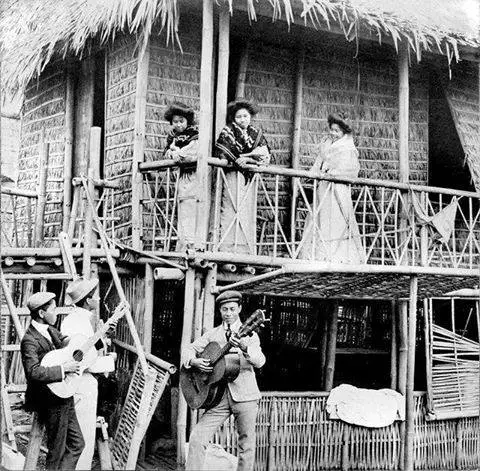
“Uso pa ba ang harana?” is the starting line in Pinoy rock band Parokya ni Edgar’s hit song, and it basically sums up the fast-disappearing old school Filipino way of courting a girl.
With the influx of Western ideas of dating, traditional panliligaw is nearly extinct in many areas of the country. Aside from harana, we can hardly see the other inherent traditions of Filipino courtship such as paninilbihan, wherein a suitor does chores for the girl’s family to prove his love for her.
Also Read: Courtship in ancient Philippines was a long, arduous, and expensive process
It’s too bad actually, since the Filipino way of courting is regarded as one of the most romantic in the world.
2. Traditional Games
Filipinos who’ve played piko, patintero or tumbang-preso are very lucky, for they have experienced the joy of playing traditional Filipino games.
Sadly, the same games we and our ancestors used to play with exuberance are in danger of being relegated to the history books, thanks largely to the younger generations’ preference to play games on their computers and smart phones.
Also Read: 7 Traditional Filipino Games You’ve Probably Never Heard Of
As a result, many young Filipinos don’t even know how to play the aforementioned games, the inconvenient side-effect being the addition of a few extra pounds on the side.
3. Pagmamano
The most definitive way of showing respect to our elders, pagmamano involves a youngster asking for the hand of an elderly person and then kissing or placing his/her forehead on the back of the hand. In return, the elderly person will “bless” the youngster.
Also Read: 19 Common Pinoy Expressions Younger Generations Won’t Understand
While we still revere and respect our senior citizens today, pagmamano has been replaced by other forms of giving respect such as “beso-beso” (a greeting done cheek-to-cheek). Although respectful, it is not as remarkable as the original pagmamano.
4. Calesa
Known as a horse-drawn carriage, calesas were introduced by the Spanish in the 18th century when they colonized the islands.
Originally, only Spanish officials and the wealthy classes could use the calesa. During the American period, however, calesas readily became accessible to anyone. In fact, the streets of Manila were filled with them prior to World War II.
Related Article: 22 Things We No Longer See In Manila
After the war, their number was greatly reduced in favor of more mechanized forms of transport, such as cars and jeepneys. Today, calesas are usually designated as tourist rides and can be found in Intramuros, Binondo, Iligan, and Cagayan.
Unfortunately, even the few calesas of today are facing extinction due to drivers being forced to find a more profitable means of livelihood.
5. Jeepney Art
The jeepney is easily one of the most uniquely Filipino icons we have, it being the backbone of the country’s public transportation system. Sadly, we are beginning to see less of those artistically-painted jeepneys of yesteryear due to the rising costs of doing such a project.
In 2011, it costs an average P100,000 to paint a jeepney in Metro Manila—no small change for drivers and operators who earn little every day. As a result, many prefer to just ditch the art and ply the roads with their unpainted jeeps.
Also Read: 27 Things You’ll Only See in the Philippines
Nowadays, many jeeps on the road have little to no art at all, their shiny metal painted with just their routes and franchise licenses. Those that do are increasingly becoming few and far between.
6. Filipino Tribes And Their Culture
Modernization and integration have left our indigenous groups fighting for their culture and way of life. For example, we can hardly see the art of indigenous tattooing today; in fact, Kalinga has only one living tattoo artist left, the 93-year-old Apo Whang Od.
Even worse, some of these tribes are not only struggling to keep their culture alive, but their very existence as well.
The Batak tribe of Palawan, for instance, is believed to number less than 300 people today. It’s unfortunate because the Batak are said to trace their roots all the way to the country’s first settlers, the Negritos.
Also Read: An Isolated Filipino Tribe Who Live Inside A Volcano Crater
7. Spirituality
Although we Filipinos are a very spiritual people, modern times have greatly limited our time for spirituality. Masses and services are treated like a cinema, where audiences come and go inside as they please.
Also Read: Bugtong, Bugtong – Can You Answer These Tricky Pinoy Riddles?
Relativism has also resulted in Filipinos cherry-picking those teachings which are applicable to them and then discarding the rest, giving rise to hypocrisy.
Even religious fiestas and celebrations like Christmas have now been given a complete makeover, notwithstanding the fact that they are supposed to be an occasion for solemnity.
8. Pan de sal
Aside from rice, one of the foods that are a mainstay in the Filipino diet is the pan de sal (literally, “salt bread”). And sadly, it seems that this iconic food is also in danger of being phased out soon, all because of the rising prices of the ingredients and the decreasing profitability of making the delicious bread.
READ: 14 Nostalgic Pinoy Foods From Your Childhood That Are Extinct Now
Since the 1990’s, the pan de sal has gotten noticeably smaller and more expensive, spurring Filipinos to shift to rice. With such an extremely unprofitable venture, even manufacturers of the cheapest-priced pan de sal have been forced to shut down their operations.
Judging by the downward trend, we may unfortunately see pan de sal disappear from the dining table soon.
9. Endemic Wildlife
We all know that the Philippines has one of the most diverse ecosystems in the world. Unfortunately, due to our wilful destruction or negligence, our country’s biodiversity is increasingly becoming endangered.
Also Read: 7 Prehistoric Animals You Didn’t Know Once Roamed The Philippines
In fact, the DENR reported that more than half of the country’s thousand-plus species of animals are in danger of going extinct. If we don’t step up our conservation efforts, we may have to bear with the fact that someday, we—or our descendants—can see Philippine eagles, tamaraws, and tarsiers only at a museum, stuffed and lifeless.
References
Cerda, J. (2013). Pinoy Tasty and Pinoy Pandesal may soon be phased out. philSTAR.com. Retrieved 26 May 2016, from http://goo.gl/jmP0Gn
DENR: More than half Philippine fauna nearly extinct. (2008). ABS-CBN News. Retrieved 26 May 2016, from http://goo.gl/gHCPqj
In Kalinga, tattoo by 93-year-old artist is skin-deep with pride and ancient traditions. (2013).InterAksyon. Retrieved 26 May 2016, from http://goo.gl/ozruAE
Lopez-Quimpo, C. (2011). Philippine jeepneys nearing end of a colorful road. CNN. Retrieved 26 May 2016, from http://goo.gl/ApdnxN
Manila Standard,. (1995). Pan de sal no longer poor man’s bread, p. 17. Retrieved from https://goo.gl/8s2odY
Wongaiham, H. (2012). Mountain people: The Bataks of Palawan. Rappler. Retrieved 26 May 2016, from http://goo.gl/Dl6k9g
FilipiKnow
FilipiKnow strives to ensure each article published on this website is as accurate and reliable as possible. We invite you, our reader, to take part in our mission to provide free, high-quality information for every Juan. If you think this article needs improvement, or if you have suggestions on how we can better achieve our goals, let us know by sending a message to admin at filipiknow dot net
Copyright Notice
All materials contained on this site are protected by the Republic of the Philippines copyright law and may not be reproduced, distributed, transmitted, displayed, published, or broadcast without the prior written permission of filipiknow.net or in the case of third party materials, the owner of that content. You may not alter or remove any trademark, copyright, or other notice from copies of the content. Be warned that we have already reported and helped terminate several websites and YouTube channels for blatantly stealing our content. If you wish to use filipiknow.net content for commercial purposes, such as for content syndication, etc., please contact us at legal(at)filipiknow(dot)net
